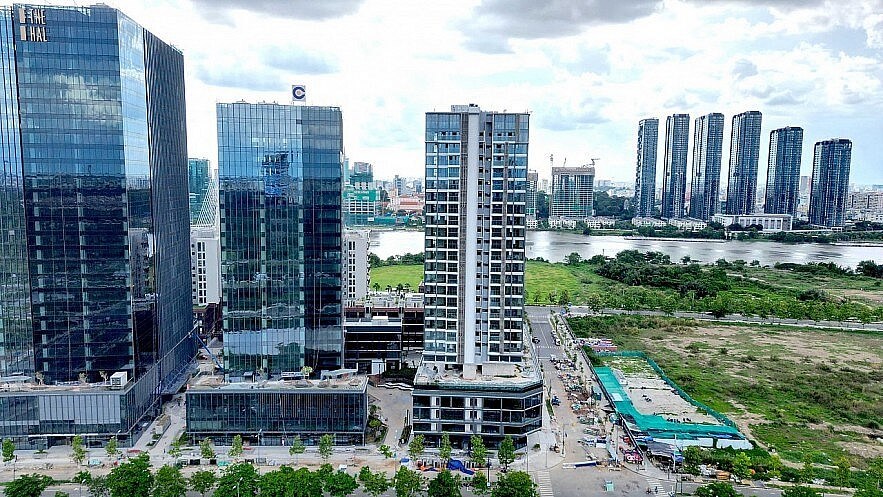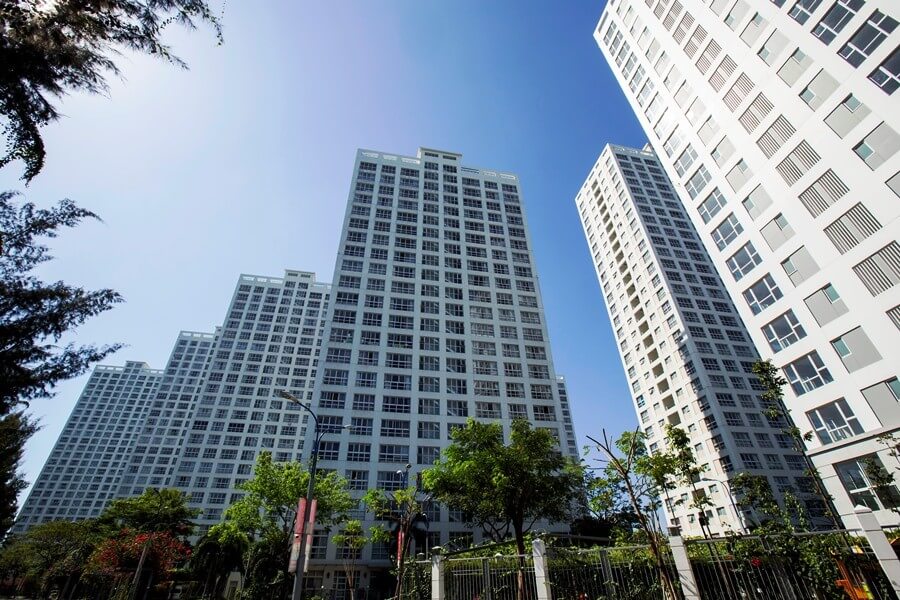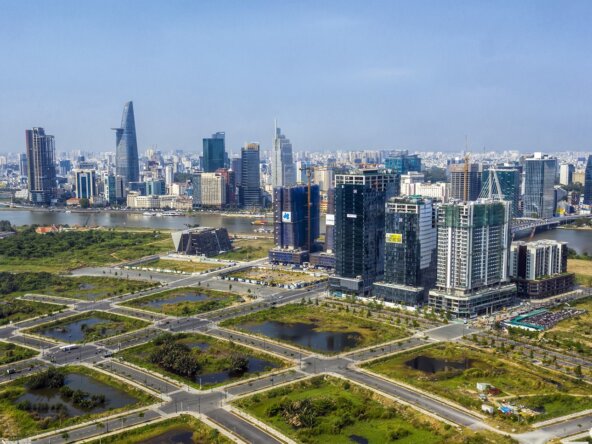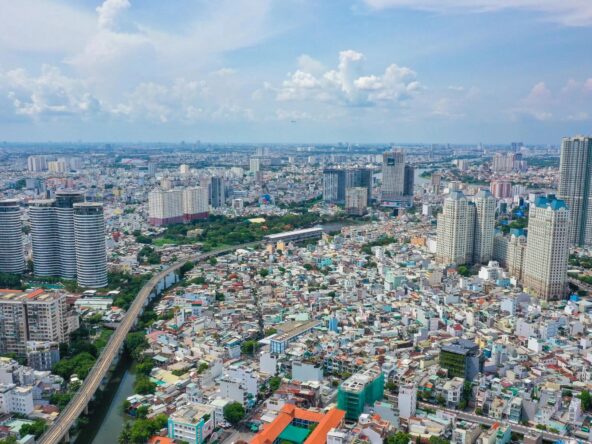Knight Frank Vietnam real estate consulting company said that in the near future, by 2026, the city market is expected to receive an additional 130,000 m2 of Grade A office supply in 2024.
In the context of many challenges as well as relatively abundant new supply, the office market in Ho Chi Minh City still maintains a very positive absorption level, with many opportunities for investment and development in the coming years.
Forecasting supply in the coming time, Knight Frank Vietnam Real Estate Consulting Company (part of the world’s leading independent real estate consulting group Knight Frank LLP) said that in the near future, by 2026, the city market is expected to receive an additional 130,000 m2 of Grade A office supply from The Nexus projects, VP Bank Saigon Riverside and Sun Tower in 2024.
Next, 80,410 m2 will be added from Alpha Town and Spirit of Saigon in 2026. Knight Frank forecasts that vacancy rates in both segments will continue to be maintained at double-digit levels, around 20% for Grade A offices and 14% for Grade B over the next 3 years.
As a result, rents are also affected accordingly, which is expected to decline in the Grade A segment and constantly put pressure on Grade B.

Commenting on the general opportunities and development trends of the office market, Mr. Neil MacGregor, Managing Director of Savills Vietnam, said that although the supply of new Grade A projects is quite abundant, the rental performance is positive.
This shows that there are still opportunities for office investors and developers in the future. Those who supply or reposition a green-certified office building will attract high rents.
According to Knight Frank Vietnam, the year 2023 will end and in Ho Chi Minh City, there are no more Grade A office buildings entering the market, only 2 projects under construction, expected to be handed over in Q1/2024, Nexus and VP Bank Tower, are located at 3B Ton Duc Thang, District 1.
Data for Q4 2023 shows that the performance of the office rental market has not been significantly affected, with only a few Grade A buildings in the city center lowering their asking rents to compete with empty buildings as well as with upcoming new supply.
As a result, the average asking rent decreased to 56.93 USD/m2/month, down 1.21% compared to 57.63 USD/m2/month in the previous quarter and down 1.4% compared to the same period last year.
Knight Frank Vietnam experts said that the vacancy rate also decreased by 1.2 percentage points, from 14% in Q3 to 12.8% in Q4 2023. At the same time, the office market began to receive space for rent in The Hallmark building (Thu Duc City), which shows that the occupancy rate is very positive in newer Grade A buildings. However, more abundant supply also caused the vacancy rate to increase by 7.9 percentage points compared to the same period last year.
The Grade B segment also has no additional supply in the fourth quarter of 2023, with an average asking rent of US$34.14/m2/month and an vacancy rate of 11.3%, 0.3 percentage points lower than the previous quarter but 3.4 percentage points higher than the same period last year, as the market has more new office space to absorb.
Grade B rents increased by 0.29% q-o-q and 1.4% y-o-y due to no additional supply. Therefore, rental building owners also seek to take advantage of contracted paid premises and take advantage of upgrading amenities and infrastructure to increase asking rents, before new supply hits the market in 2024.
Similarly, in a recent sharing related to the picture of real estate investment in Vietnam in the next 2 years, Mr. Neil MacGregor commented that, despite global challenges, the office market in Ho Chi Minh City still maintains a high occupancy rate and stable rental growth rate.
Ho Chi Minh City’s office market is one of the bright spots in the Asia-Pacific region. High-end green certified office buildings also help ensure high occupancy rates and rents.

“Despite the efforts of building owners, abundant supply in the coming years will lead to a shift in quality from Grade B to Grade A offices. This will put pressure on rents, especially for existing projects and long-standing buildings in both segments, ” said Leo Nguyen, Director of Tenant Strategy and Solutions at Knight Frank Vietnam.
According to Knight Frank Vietnam’s research, the majority of large transactions in 2023 will come from banking, insurance and technology tenants wishing to move office space (accounting for 62%), followed by financial and oil and gas tenants re-signing contracts (19%), the rest are lease expansion contracts (16%) and new tenants entering the market ( 3%) from other professions.
In terms of leasing area, premises larger than 2,000 m2 account for 63% of key transactions, the area from 1,000 to 2,000 m2 accounts for 25%, and the remaining 12% is an area of 500-1,000 m2.




